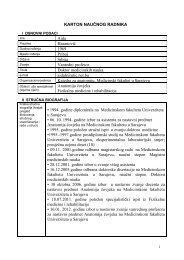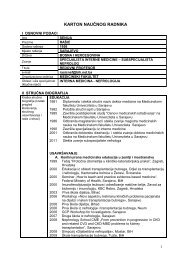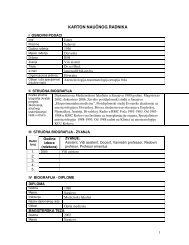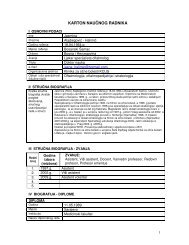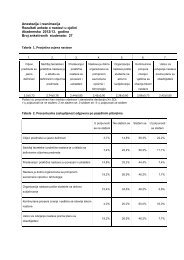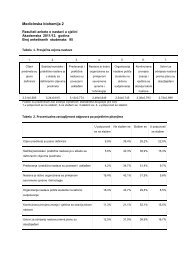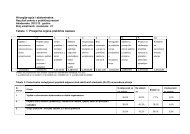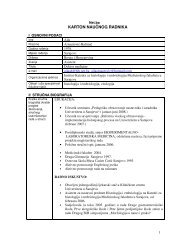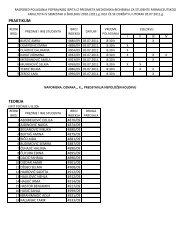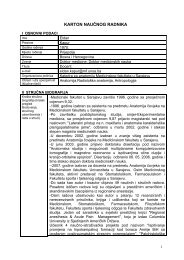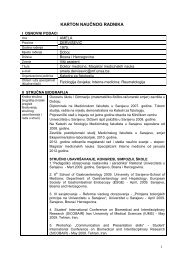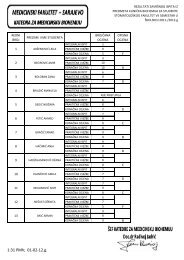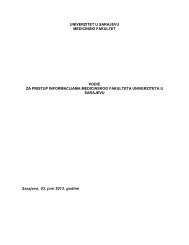Contents - Medicinski Fakultet u Sarajevu - University of Sarajevo
Contents - Medicinski Fakultet u Sarajevu - University of Sarajevo
Contents - Medicinski Fakultet u Sarajevu - University of Sarajevo
You also want an ePaper? Increase the reach of your titles
YUMPU automatically turns print PDFs into web optimized ePapers that Google loves.
Folia Medica 2011; 46 No 1:35-40Figure 2. Antimicrobial resistance <strong>of</strong> the isolated strains <strong>of</strong> MSSA and MRSAfrequency showed resistance to penicillin(82.7%) and a smaller percentage to gentamicin(4.2%). Cefoxitin resistant strainswere confirmed by E test as MRSA strains.They show cross resistance to penicillinand cefoxitin in 17.3% <strong>of</strong> cases and associatedwith resistance to macrolides (7.8%),particularly in isolates <strong>of</strong> Staphylococcusaureus from swabs <strong>of</strong> the nose, throat, skin,changes in the skin, ears, eyes and navel innewborns delivered in the local maternityhospitals (HA-MRSA) and some strainsshowed a much smaller percentage <strong>of</strong> theassociated resistance to trimethoprim sulfamethoxazole(0.4%), cipr<strong>of</strong>loxacin (0.4%)and gentamicin (3.5%) in those older agewho have a history <strong>of</strong> recent hospitalizationor some other risk factor that connects themwith HA-MRSA.Antibiotic type predominant amongMSSA cells is characterized by resistanceto penicillin in 78.2% <strong>of</strong> cases, and the rest<strong>of</strong> the MSSA strains were distributed in 7more strains in addition to penicillin resistanceand associated with resistance togentamicin, chloramphenicol, cipr<strong>of</strong>loxacinand erythromycin in various combinations.MRSA cells were divided into 7 antibiotictypes with predominantly antibiotic typesresistant to penicillin and cefoxitin (5.9%)and penicillin, cefoxitin and erythromycin(7.4%).DiscussionResults <strong>of</strong> our investigation indicate thatMRSA might be en emerging pathogen inCanton <strong>Sarajevo</strong>. To our knowledge, this isone <strong>of</strong> the first reports <strong>of</strong> routine surveillancefor this organism in Bosnia and Herzegovina.Prior studies <strong>of</strong> MRSA have been reportedonly from hospital condition (6,7).It is assumed that the majority <strong>of</strong> invasivestaphylococcal infections originated fromnasal carriers. Data from the literature showthat the rate <strong>of</strong> nasal carriers <strong>of</strong> 1.5- 9.0%among adults in the community anywherein the world (8,9). Among health workersin hospital conditions that rank ranges from6.0-17.8%, although there are reference dataand higher rates <strong>of</strong> nasal carriers (10,11).38



